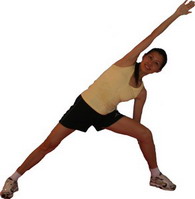18.5 - 24.9 = Normal
25 - 29.9 = Overweight
> 30 = Obesity



If time permits, I would like to sign up for a proper course. It was good exercise :)
- Beatty Sec
- Beatty Sec
- Beatty Sec
- ICA
- CHIJ St Nicholas Girls School
There were so many moves of self-defense. Coaches are very nice. This rocks!
- Northland Primary
- CHIJ St Nicholas Girls School
Coach make us feel “Taichi"
- Hong Wen School
I want to learn more advanced Taichi.
- Hong Wen School
- Princess Elizabeth Primary
The coach is very good in Wushu, I would like to continue learning.
- Princess Elizabeth Primary
- Princess Elizabeth Primary
Read More >>
(WORD COUNT: 784)

It is common to see many sports enthusiastic getting too eager and excited about getting into the actual sports or exercise workout straight away that they usually perform little or no warming up exercises at all. This usually resulted in higher chances of unnecessary sports injuries such as sprains, muscle tear, ligament injuries etc, which can actually be prevented with sufficient warming up and cooling down exercises so as to condition our body prior to engaging in any physical workout.
When it comes to exercises, regardless of what form of physical activities it is, we need to understand that during the actual physical workout, our body condition differs greatly as compared to our normal body condition. In order to bridge the link between the normal body condition and exercise condition, the only way is through proper warming up and cooling down exercises.
One of the common reasons for sports injuries is due to muscle stiffness, where it is associated to be directly related to muscle injury. Hence the warming up exercises should target at reducing muscle stiffness. Knowing this, we now look into more details on what warming up and cooling exercises are all about.
Warming up is the process whereby we aim to raise our body temperature by about one to two degrees Celsius prior to any physical workout. There have been several books which mentioned about 38.5 degree Celsius as the ideal or optimal body temperature for warming up. The reason for raising the body temperature is to condition the muscles so as to prepare them to be ready for the exercise condition.
Warming up exercises is performed at the very beginning of any physical workout routine. It is recommended for athletes to performing dynamic warming up exercises before doing stretching exercises, which will help enhance sports performance. A typical warming up routine should last between 10 to 15 min of the entire workout session.
When muscles started to contract, some heat energy is released. However, the body is not very good at making use of that heat energy. While a portion of the energy released from the heat is used in the energy production, a portion goes into warming up the respective muscle tissue, and the rest of the heat is lost through the skin by means of perspiration.
As the muscle tissues start to warm up, our heart rate will also rise so as to circulate the blood faster in an attempt to remove away the heat by spreading the heat to different parts of the body. With the heat from energy being released at working muscle, together with the extra heat obtained from the warmer circulating blood the muscle tissue becomes warmer. Thus, another mean of monitoring if the body is properly warmed up is by monitoring our heart rate, where it should reach 70% to 80% of maximum heart rate.
The result is that the muscle will have improved elastic properties as compared to a cold muscle or even a muscle at normal body temperature. Elastic properties of the muscles are important as it allow the muscle to return back to normal resting length after being stretched. The greater the elasticity of the muscle, the less potential to strain or tear the muscle, and this also enable the muscles to contract much stronger and faster.However for beginners or amateurs who just started any physical regime, it is more recommended to go through static stretching exercises first so as to get a proper understanding of how to align the body before actually performing the more dynamic warming up. While dynamic warming up does shows enhancement in sports performance, it also has a higher chance of injuries if not done properly.
Taking for instance, if one were to start engaging in double squats as warming up but without first having a proper understanding of how the weight should land & how the body should be aligned, a lot of the body weight will actually be acting on both knees instead of trying to warm up the quadriceps muscles. This is especially true since the rhythm & speed of dynamic warming up is faster & the body might not have sufficient time to correct the alignment before the execution of the movements.
We can delicate the last portion of our warming up routine to specific sports skills which we will be doing. For example, in Taichi exercise, we can perform dynamic high knee raise, lunges, double squats during warming up but only thing to take note is to execute it at a reduced or lower intensity, where this will significantly reduce the chances of having a sport specific injury while achieving the goal of warming up and enjoying the sports.

 Multivitamin Drink
Multivitamin Drink
 More info >>
More info >>
 More info >>
More info >>
 Sports Massage Therapy
Sports Massage Therapy